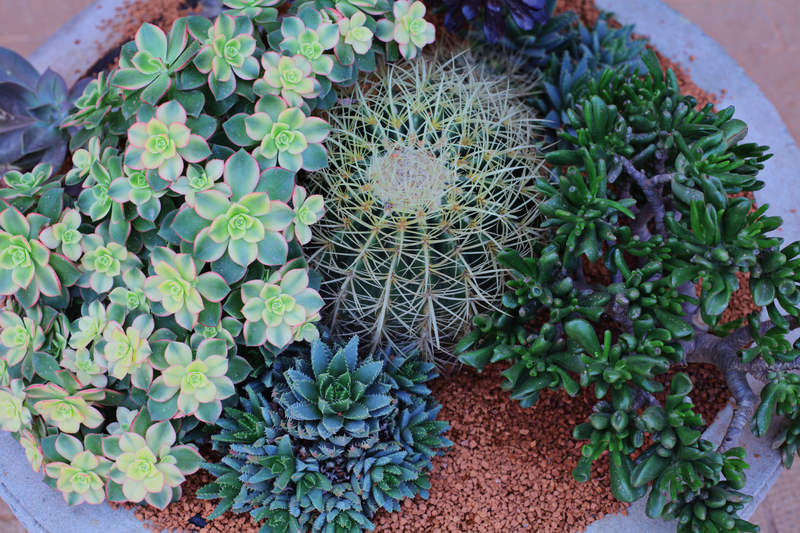Designing Vibrant Spaces for Kids in Your Garden
Posted on 15/09/2025
Designing Vibrant Spaces for Kids in Your Garden: An Inspiring Guide
Your garden holds vast potential--not just as a relaxing retreat for adults but also as a playground and adventure zone for children. Designing vibrant spaces for kids in your garden can turn an ordinary outdoor area into a magical place fostering creativity, movement, and exploration. If you're looking for ways to create playful garden spaces for children, this comprehensive guide offers you innovative ideas, practical tips, and essential safety considerations.
Why Vibrant Garden Spaces Matter for Kids
Children's outdoor play is vital for healthy child development. Gardens are the perfect canvas for cultivating a vibrant environment where kids can connect with nature, exercise, learn, and have fun. By designing colorful and engaging kids' garden spaces, you support their physical, emotional, and social growth.
- Physical Health: Running, jumping, and climbing outdoors help build muscle strength and coordination.
- Imagination: Vibrant and imaginative spaces spark creativity and storytelling.
- Social Skills: Shared spaces teach cooperation, sharing, and conflict resolution.
- Nature Connection: Children develop respect and understanding of the natural world.

Key Elements of Vibrant Garden Spaces for Kids
A well-designed children's garden play area incorporates various elements to stimulate all the senses. Below are the essential components to consider when transforming your garden into a kid-friendly zone.
1. Play Structures and Equipment
- Swings: Classic, simple, and loved by kids of all ages.
- Slides: Add a sliding element for endless fun and adventure.
- Climbing Frames: Encourage strength and coordination.
- Treehouses: Inspire imaginative play and a sense of ownership over their own space.
When choosing equipment, opt for vibrant colors and shapes that blend with your landscape. You can also get creative by repurposing materials--think a ladder fashioned from old wooden pallets or a tire swing.
2. Sensory Plants and Gardens
Introduce children to the beauty of plants by creating a kid-friendly sensory garden. Use plants of different textures, colors, and scents--like lamb's ear for touch, lavender for smell, sunflowers for sight, and strawberries for taste. Arrange plants in mosaic patterns, spirals, or rainbow rows to capture attention.
- Herb spirals or raised planting beds at child-friendly heights
- Vertical gardens with edible or fragrant plants
- Butterfly gardens to attract colorful pollinators
3. Natural Play Features
Natural materials like logs, stones, and sand stimulate open-ended play and creativity. Nature-inspired kids' garden designs can include:
- Balance beams made from timber logs
- Rock-climbing areas
- Sandpits or mud kitchens for messy sensory play
- Secret tunnels or willow dens made from living plants
These elements seamlessly blend play with the garden environment, encouraging exploration and experimentation.
4. Artistic and Colorful Accents
Bring brightness and fun through art. Install mosaic stepping stones, painted rocks, or colorful murals. Involve your children in art projects, like decorating birdhouses or crafting wind chimes with recycled materials.
- Pave paths with vibrant tiles or glow-in-the-dark pebbles
- Interactive murals, such as a chalkboard wall or magnetic board
- Personalized signs or totem poles created as family projects
5. Space to Relax and Socialize
Even the most active child needs a place to unwind. Include quiet nooks and shaded seating where children can read, draw, or simply rest. Use canopies, hammocks, or cushioned floor mats to make these spots enticing.
Planning Your Kid-Friendly Garden: Step-by-Step
Now that you know the key components, let's walk through the steps of planning and designing a vibrant children's garden space.
1. Observe and Involve Your Kids
Before making any changes, observe how your children use the garden and what they enjoy most. Invite them to share ideas: What colors or shapes do they like? Which games do they play? Involving children in the design process gives them a sense of ownership and makes the final result more meaningful.
2. Assess Your Garden Space
- Identify sunny and shaded areas
- Check for uneven or hazardous terrain
- Locate water sources and access points
- Measure available space for play, planting, and relaxation zones
This assessment helps you plan zones efficiently and position elements for safety and convenience.
3. Create a Flexible Layout
Divide the garden into different "rooms," using hedges, trellises, or flower beds to define areas for play, learning, and relaxation. Flexible layouts allow the garden to adapt as your children grow and their interests change.
4. Emphasize Safety
Safety is paramount in all kids' garden designs. Follow these tips:
- Choose non-toxic, child-safe plants
- Install soft surfaces under play equipment (bark chips, rubber mulch, or grass)
- Secure edges and remove sharp objects or toxic materials
- Add fencing or low barriers, especially for gardens near busy streets or water features
5. Layer in Color and Art
Vibrant color schemes add energy and appeal. Use a palette of bright colors for planters, play structures, and accessories. Let children help paint or decorate features to reflect their personalities.
6. Consider Year-Round Use
Design your garden with all seasons in mind. Plant evergreen shrubs for winter interest, add a sheltered playhouse for rainy days, and select durable materials that withstand weather changes.
Creative Ideas for Designing Playful, Vibrant Garden Spaces
Here's how to take your garden design to the next level, ensuring fun, learning, and engagement for years to come.
Outdoor Learning Areas
- Mini vegetable or pollinator gardens where children can grow and harvest their own food
- Weather stations with rain gauges and thermometers
- "Bug hotels" or wildlife habitats for nature observation
- Chalkboard or whiteboard walls for spontaneous art and learning opportunities
Adventure and Discovery Zones
- Maze or labyrinth paths created from shrubs, flowers, or sensory materials
- Hidden fairy or dinosaur gardens for storytelling
- Climbing walls with safe, colorful holds
Water Play Features
- Mini splash pads or shallow fountains
- Stream or pebble flow features (always supervise children closely)
- Container ponds with aquatic plants and toy boats
Role Play and Performance Spaces
- Outdoor stage or platform for plays, dancing, and shows
- Market stalls or mud kitchens to inspire games of shop and restaurant
DIY Construction and Building Stations
- Loose parts areas with wood offcuts, fabric, ropes, and crates for creative building
- Simple tool sets for supervised hammering or gardening tasks
Maintenance and Evolving with Your Children
A vibrant kid's garden space will naturally change over time. As your children grow, their interests and abilities shift. Maintain flexibility by:
- Regularly assessing equipment and structures for safety
- Introducing new plants and features each season
- Rotating toys and props to prevent boredom
- Encouraging children to take responsibility for certain areas, like their own flower or veggie beds
Plant fast-growing annuals for immediate impact, while also establishing slower-growing shrubs and trees for the future. This layered approach ensures the garden remains vibrant and inviting for years to come.
Tips for Maximizing Color and Creativity
- Paint surfaces in bold hues: Fences, sheds, and raised beds can all become cheerful features.
- Play with pattern: Use checkerboard, spiral, or zigzag paths.
- Encourage edible color: Plant rainbow chard, red strawberries, purple carrots, and yellow tomatoes.
- Upcycle materials: Old tires, buckets, and shoe organizers can be transformed into vibrant planters or stepping stones.
Garden Design Checklist for Vibrant Kids' Spaces
- Safety first: Regularly check for potential hazards and address them immediately.
- Stimulation and variety: Include areas for movement, rest, creativity, and learning.
- Accessibility: Make sure features and paths are easily reachable for children of all ages.
- Personalization: Let your kids help with design, planting, and decorating projects--ownership brings pride and respect for their garden.

Frequently Asked Questions (FAQs)
How do I keep a kids' garden safe and low-maintenance?
Focus on sourcing low-maintenance plants, using durable equipment, and designing easy-to-access paths. Perform routine inspections for hazards, and choose non-toxic plant species.
What are some good plants for a children's sensory garden?
Consider lamb's ear, mint, chives, nasturtiums, sweet peas, strawberries, and lavender. Avoid anything with thorns, toxic berries, or irritating sap.
How can I create a small vibrant garden for kids in limited space?
Maximize vertical planting, use container gardens, wall-mounted chalkboards, and compact sandpits or playhouses. Focus on bright colors and multipurpose features.
Conclusion: Your Path to a Magical Outdoor World
Designing vibrant spaces for kids in your garden is an art as much as it is a science. With thoughtful planning, attention to safety, and a splash of creativity, you can create a colorful, nature-filled, and inviting space that sparks your child's imagination for years to come. Encourage exploration, celebrate creativity, and allow your garden to evolve as your children grow. The result is more than just an attractive garden--it's a nurturing environment that builds happy memories and helps kids thrive.
Ready to create your children's dream oasis? Dive into your garden and let your imagination bloom!

